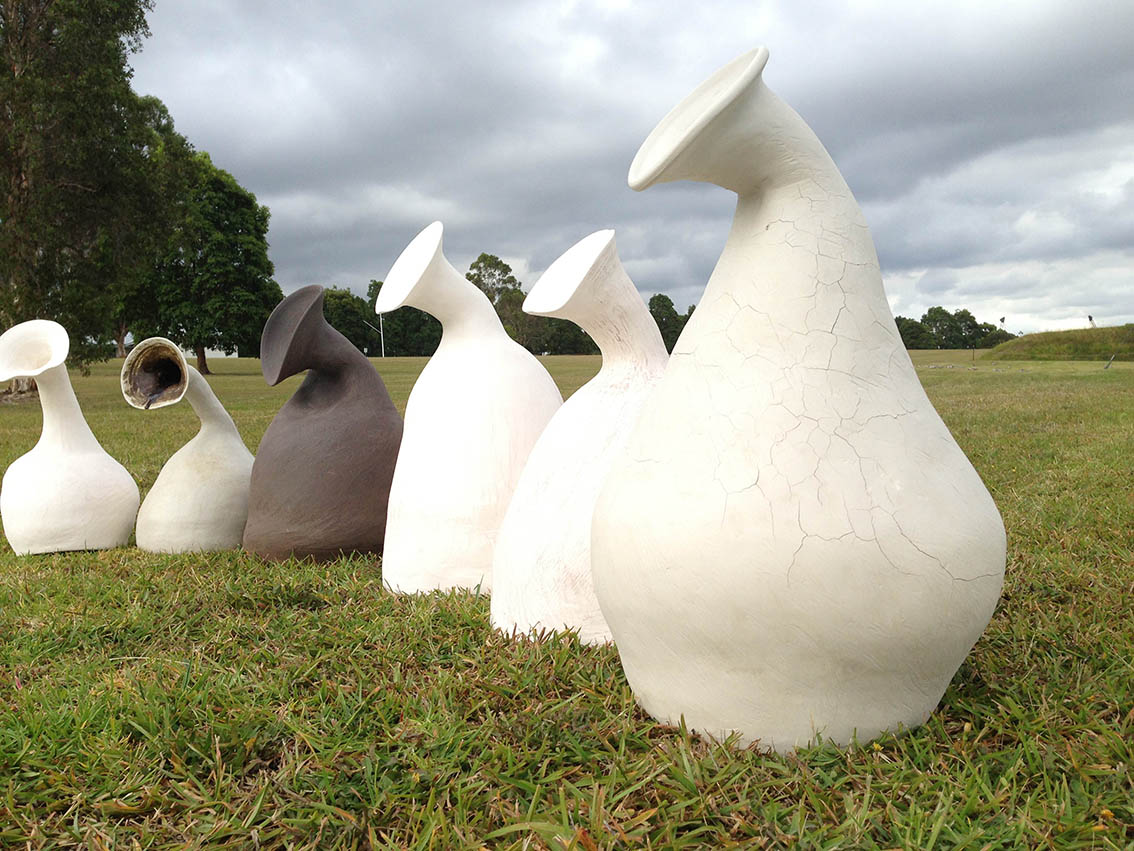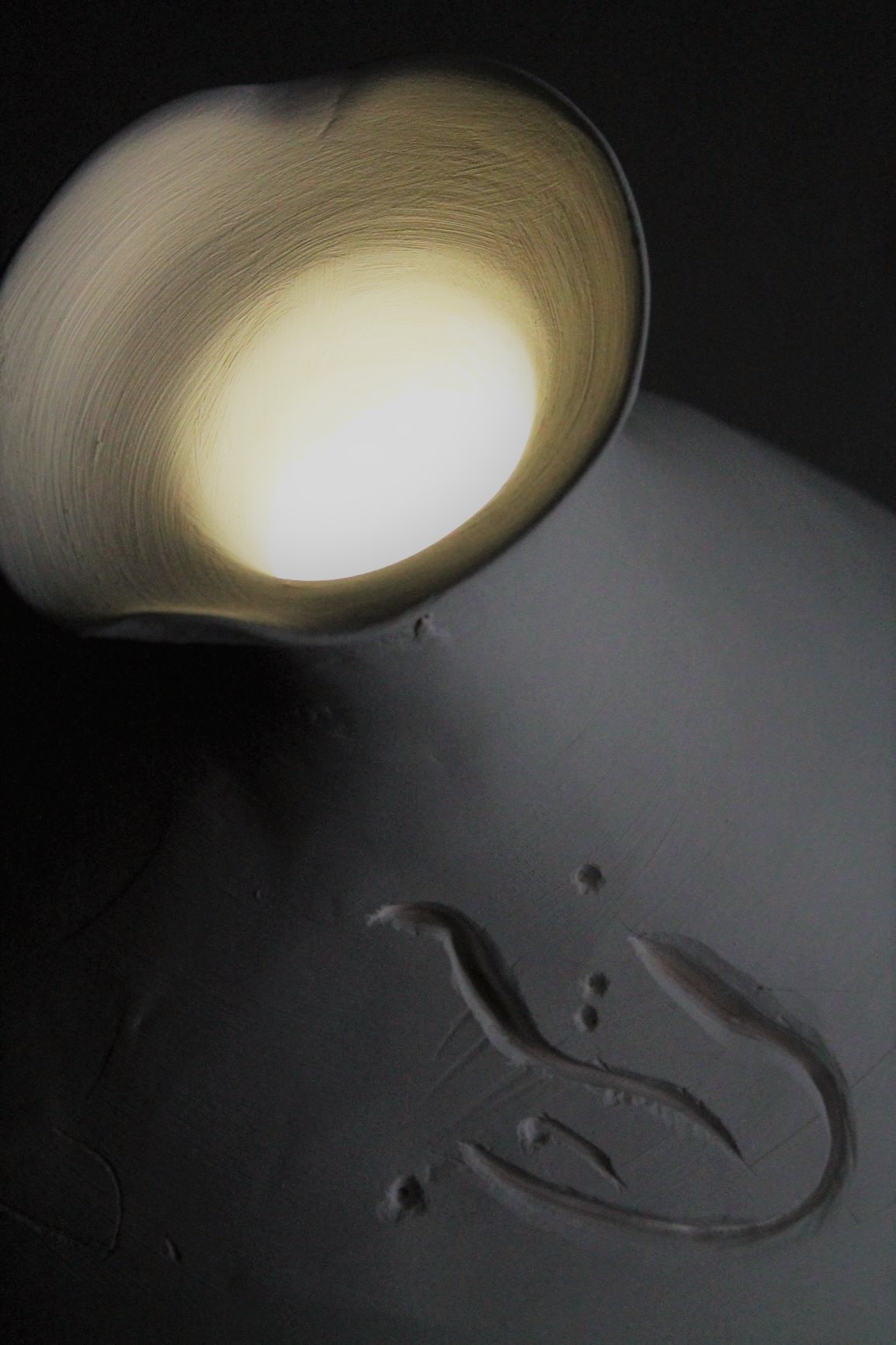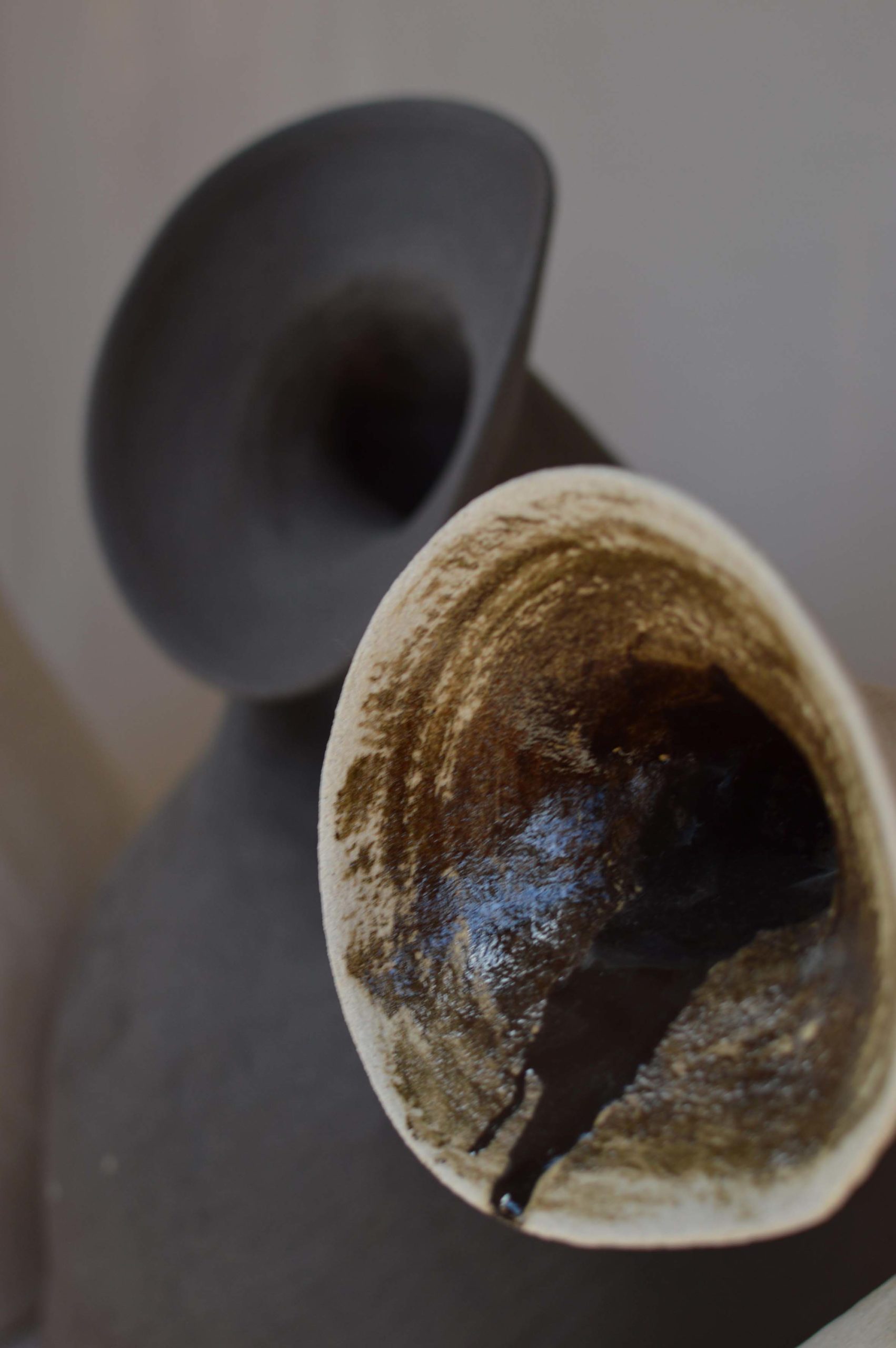DELIGHTFUL INSIDE, 2014
Wheel-thrown and hand-built oxidation fired stoneware, bandage, LED light
Dimensions variable
Delightful Inside deals with censorship by addressing gender inequality as an analogy for oppression. The forms are abstract, although they could also be seen as figurative representations of the human figure. They are of differing heights, resembling a random group of female and male humans of different ages.
The sculptures are vessels with a large round lower body, narrowing towards the neck and opening at the very top, like a vase or a flower. The open top of each vessel is bent; some vessels are open at the bottom. The vessels are not functional as everyday objects. The group of figures is arranged in one line facing in the same direction like a chorus.
All of the sculptures are wheel-thrown and hand-built ceramics, which reveal evidence of the process of making. The surface textures range from smooth to crazed and, although two sculptures display signs of polishing, the overall impression is that the shape is more important than the surface. One of the vessels is cracked and was joined after firing with a bandage. The bandage hides the text or provides the possibility that there is text below although hidden from view.
The possibility that each of the vessels represents a human being allows for poetic readings and transforms the passive role of the viewer into that of an active participant, because the viewer is able to engage with the work through personal narratives. This initial interaction between viewer and work based on the aesthetics can introduce the audience to analyse the work further. The abstract figuration and the writing, which is hidden by bandages or washed away show that something is being said, which is not allowed. This points to the limitations placed on visual artists by censorship and repression and criticises the restriction of free speech. One questions what could be inside the vessels. The large ceramic vessels are shapes which resemble human forms.
One of the vessels has the word “outside” engraved on its outer surface. The engraving is deep and appears like a cut through skin. The violence to the outside is counterbalanced by the warm light coming from the inside. I am exploring the notion of change. The spiritual message of my work speaks of transformation and hope. The concept of hope can only exist where improvement is possible. Hope is a human sentiment, which is developed when we identify our imperfection. Change occurs when hope is translated into action. With the works in this exhibition I am reflecting on the precise moment when hope is expressed, but is not yet translated into action. This is the moment in time when the potential for change is at its greatest. The exhibited figures are defiant in the face of adversity. They express solidarity with each other and recognise belonging to a group.



